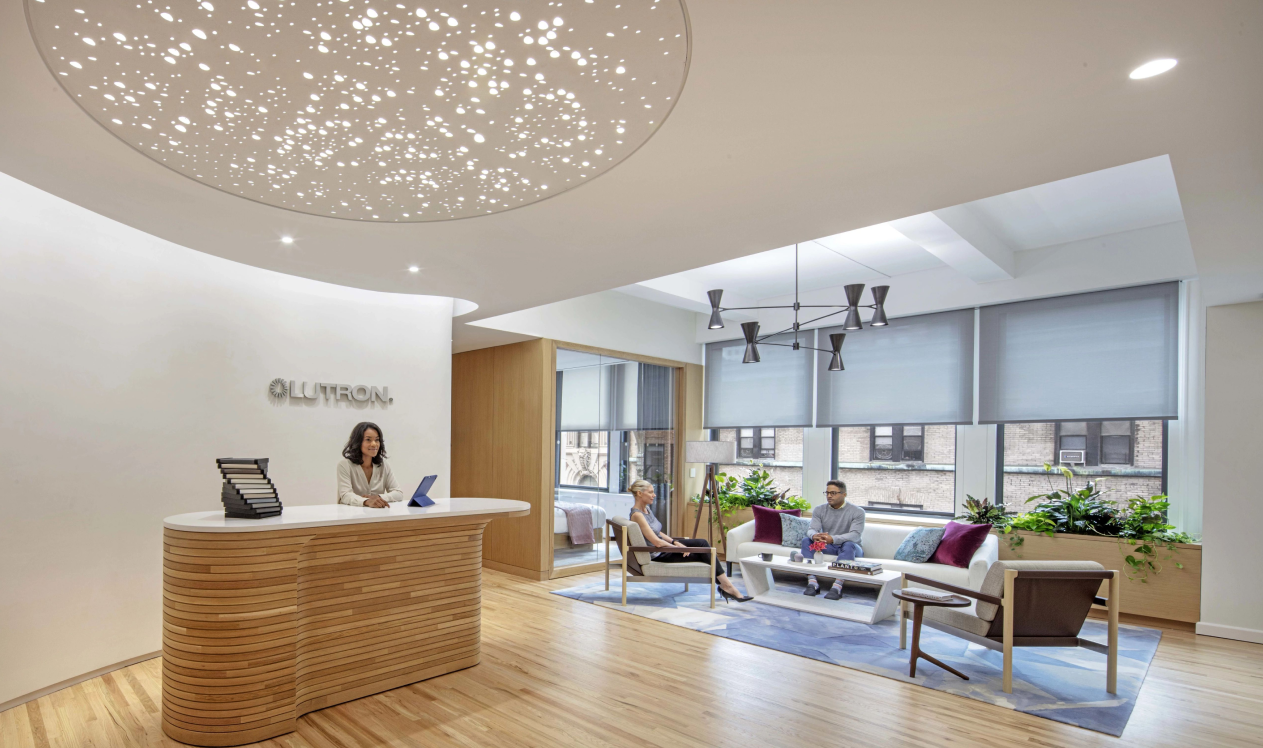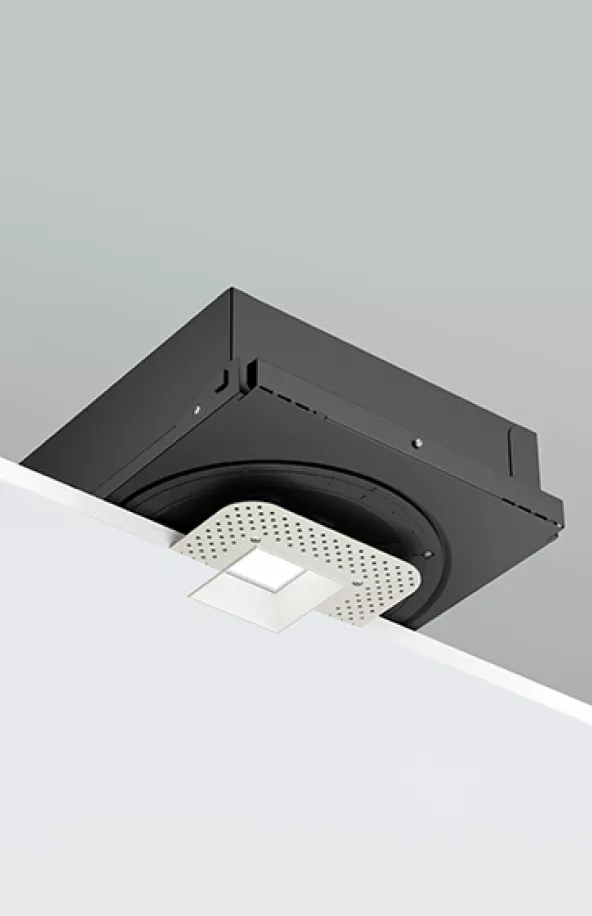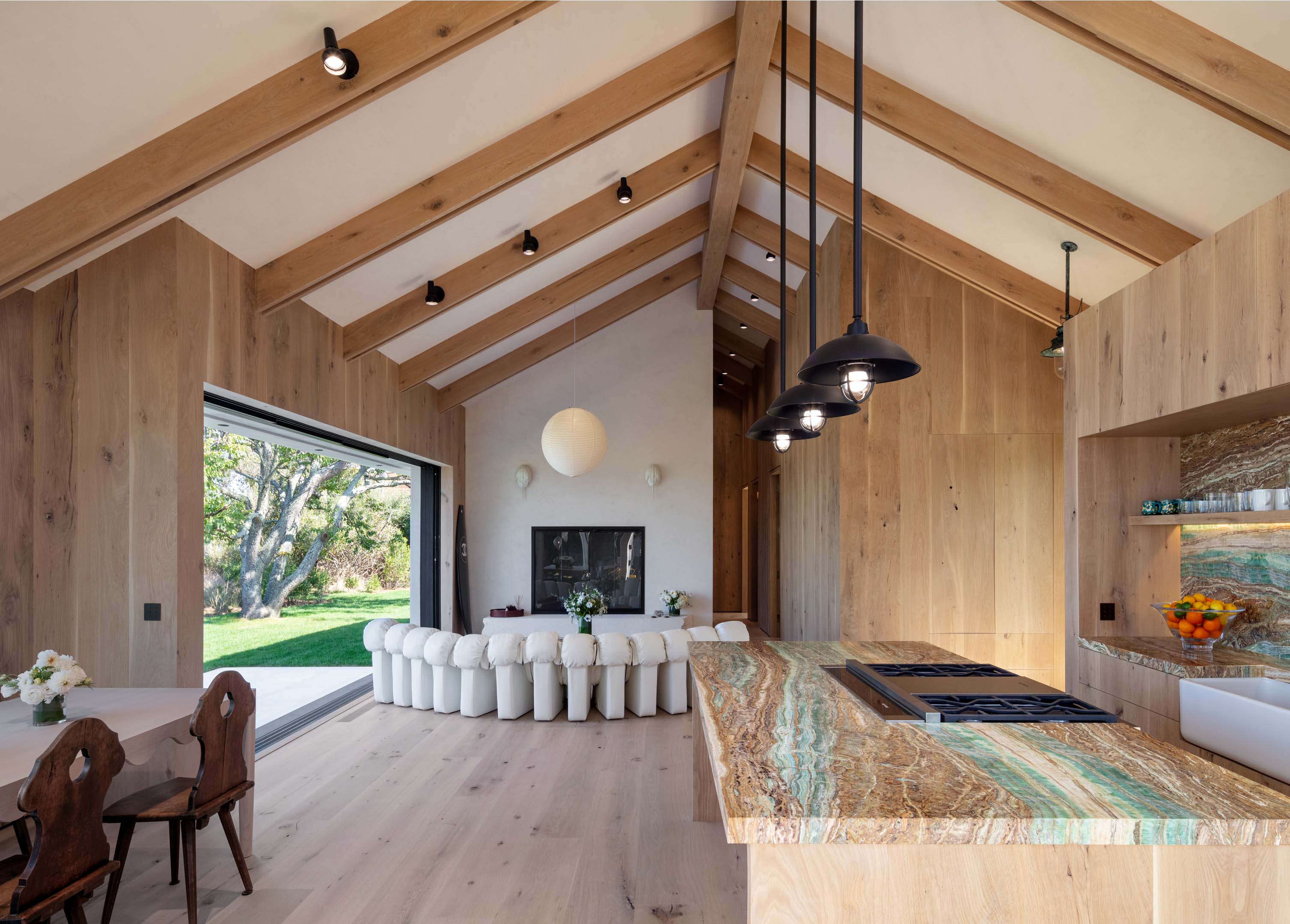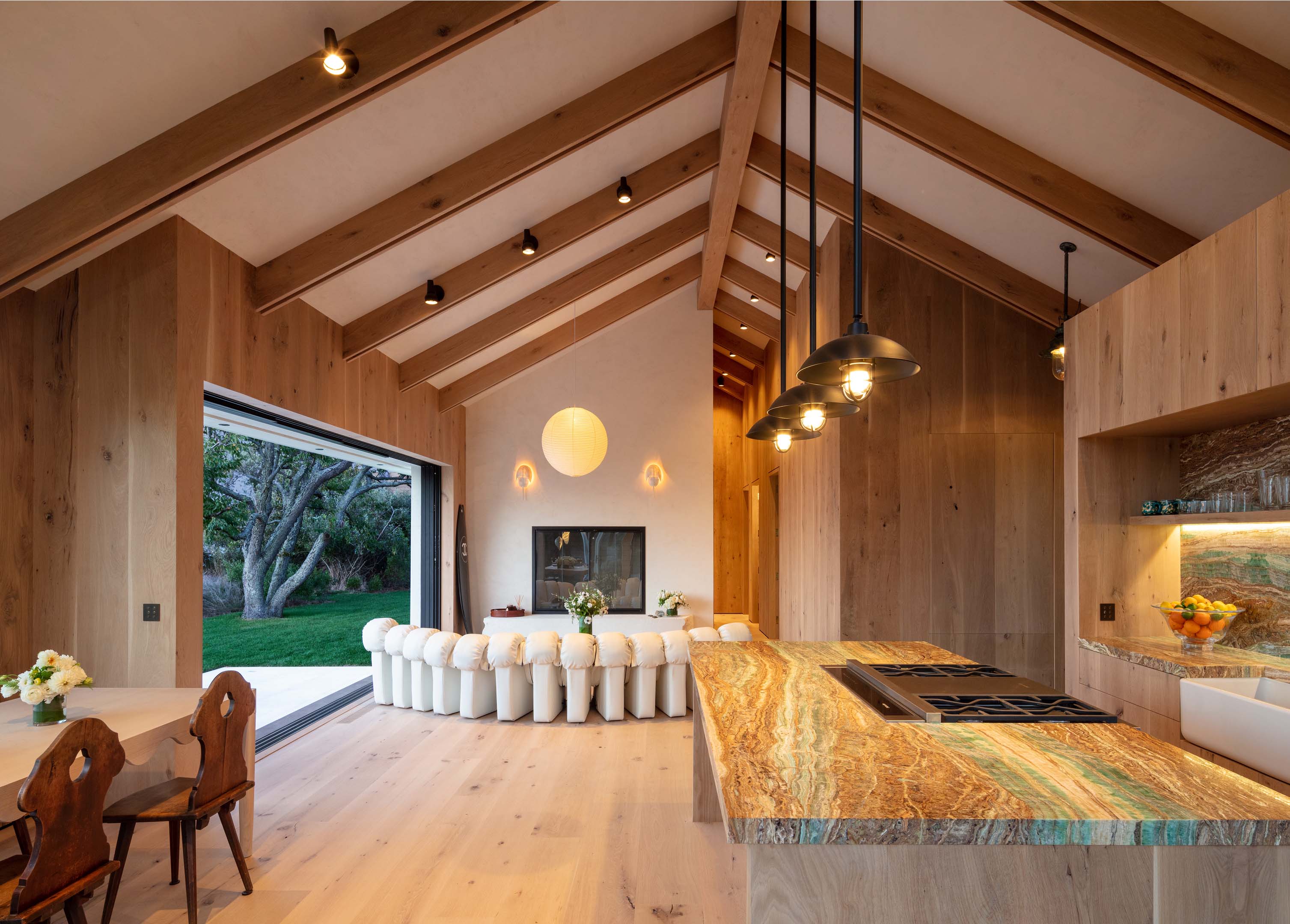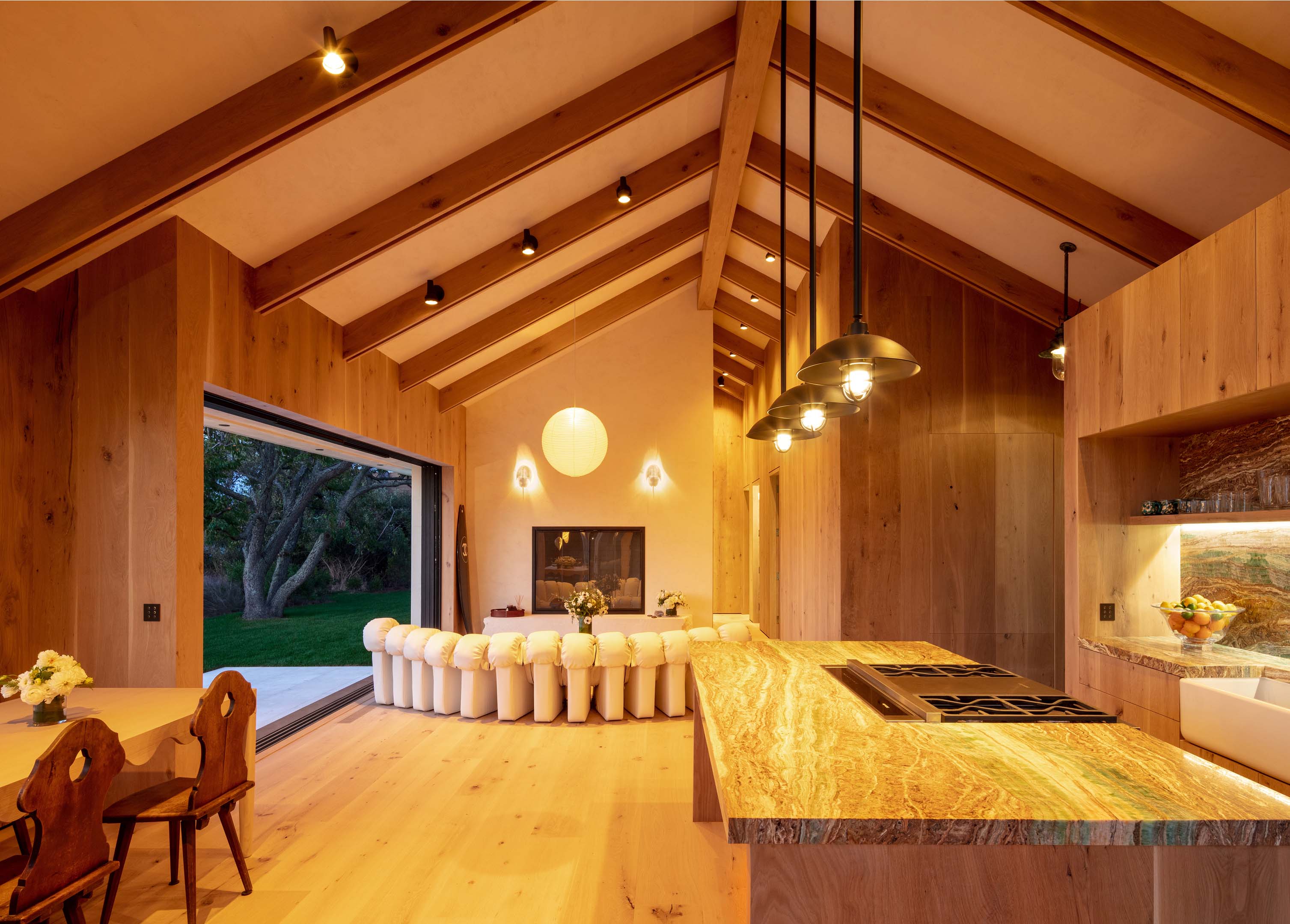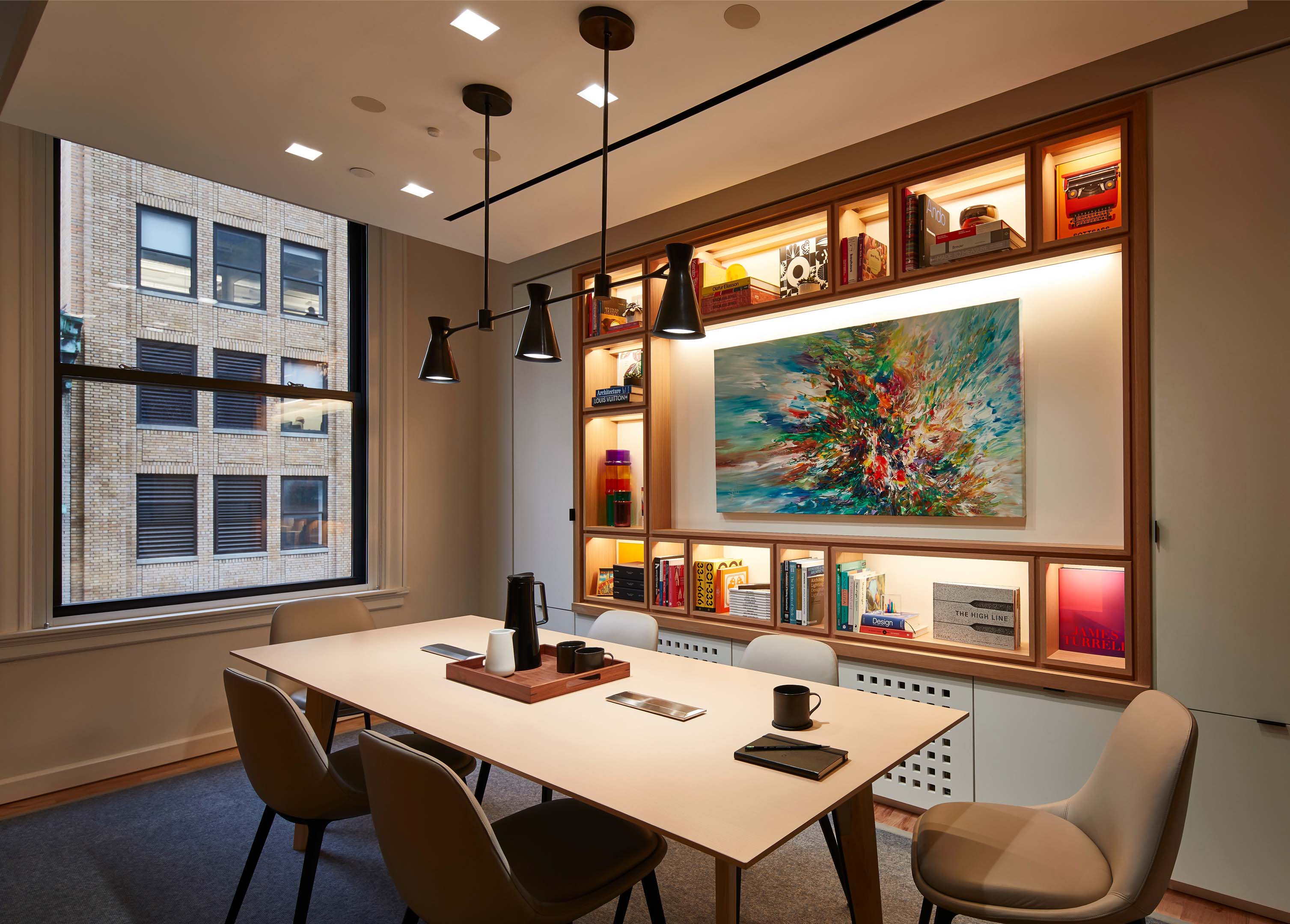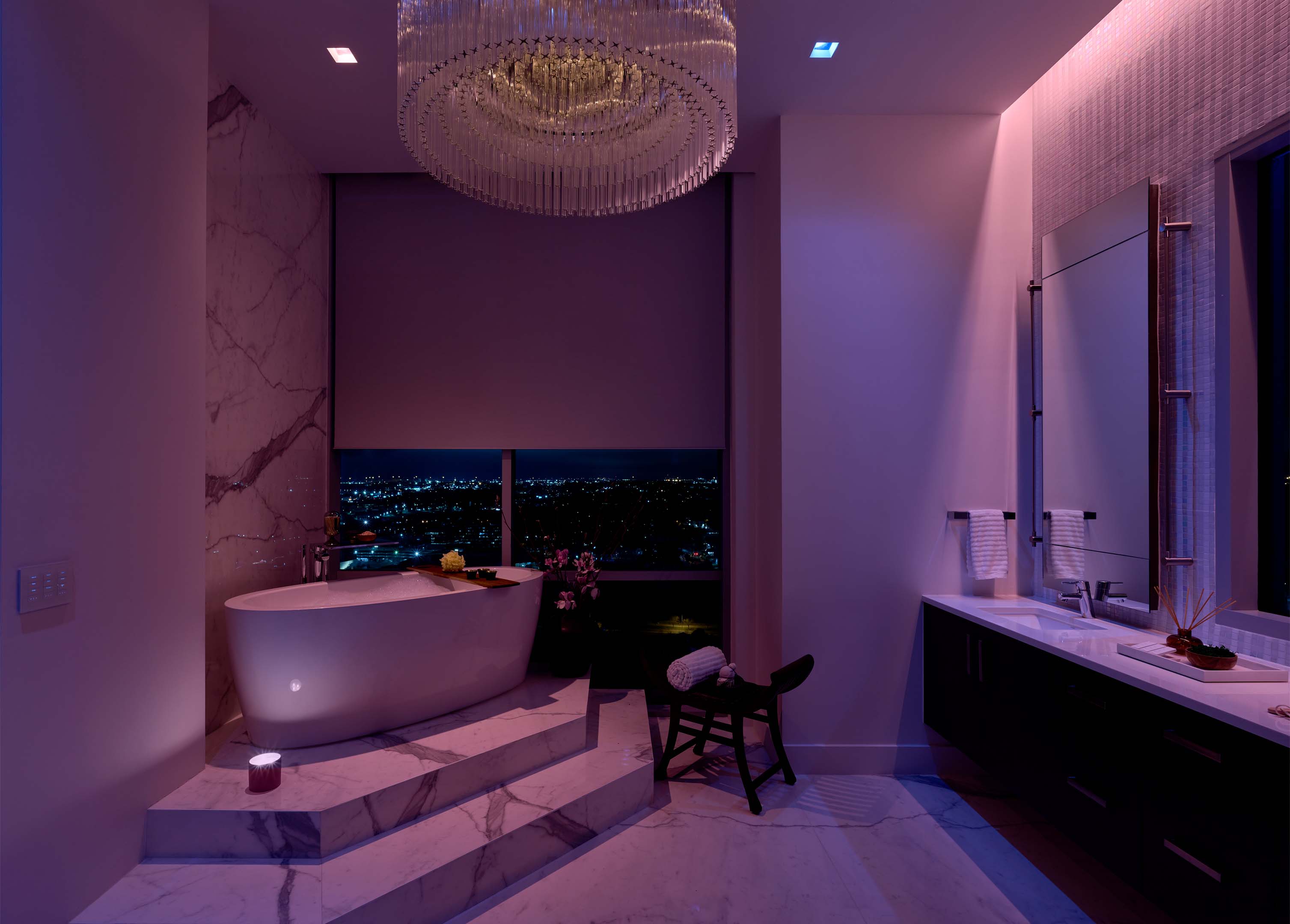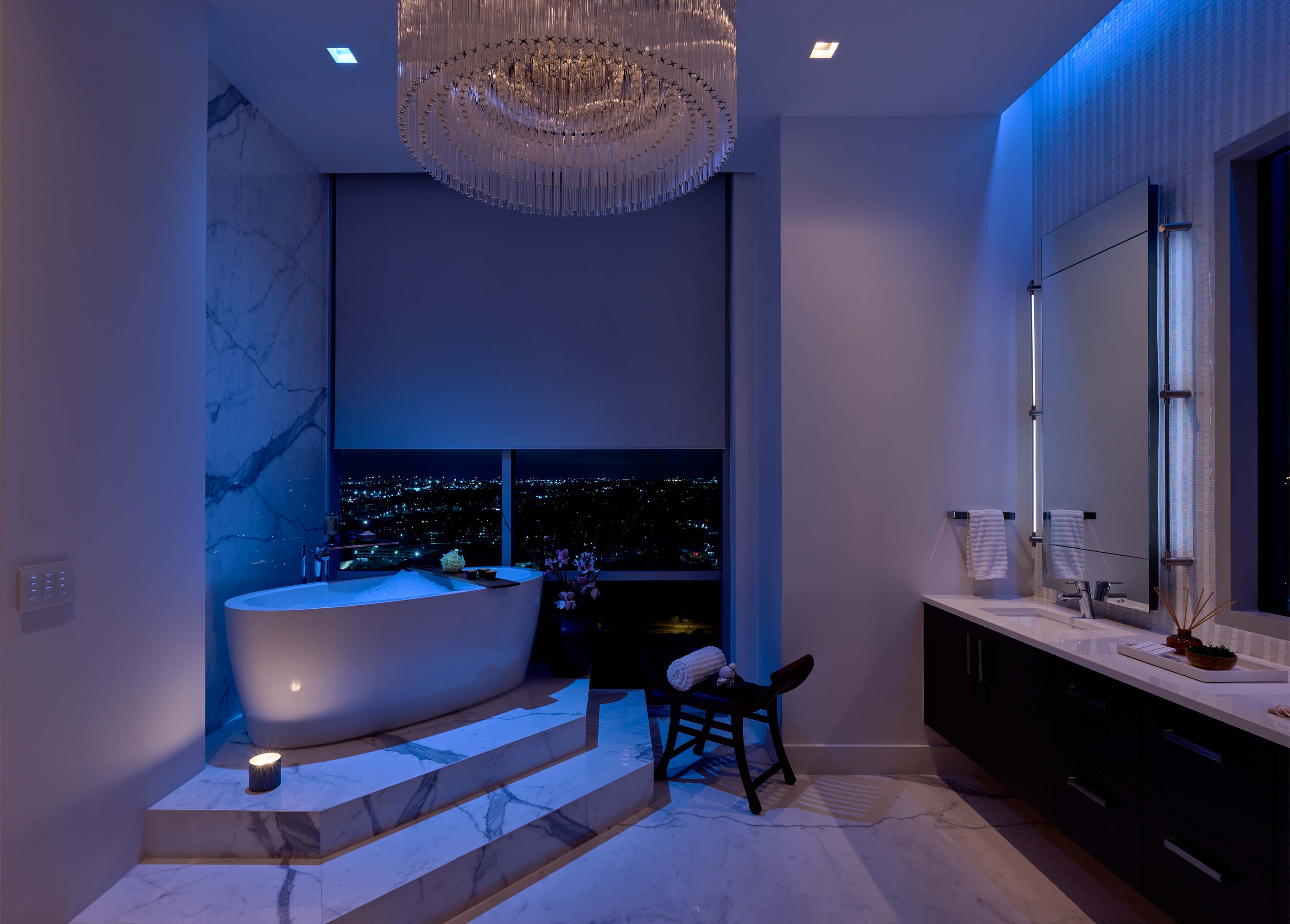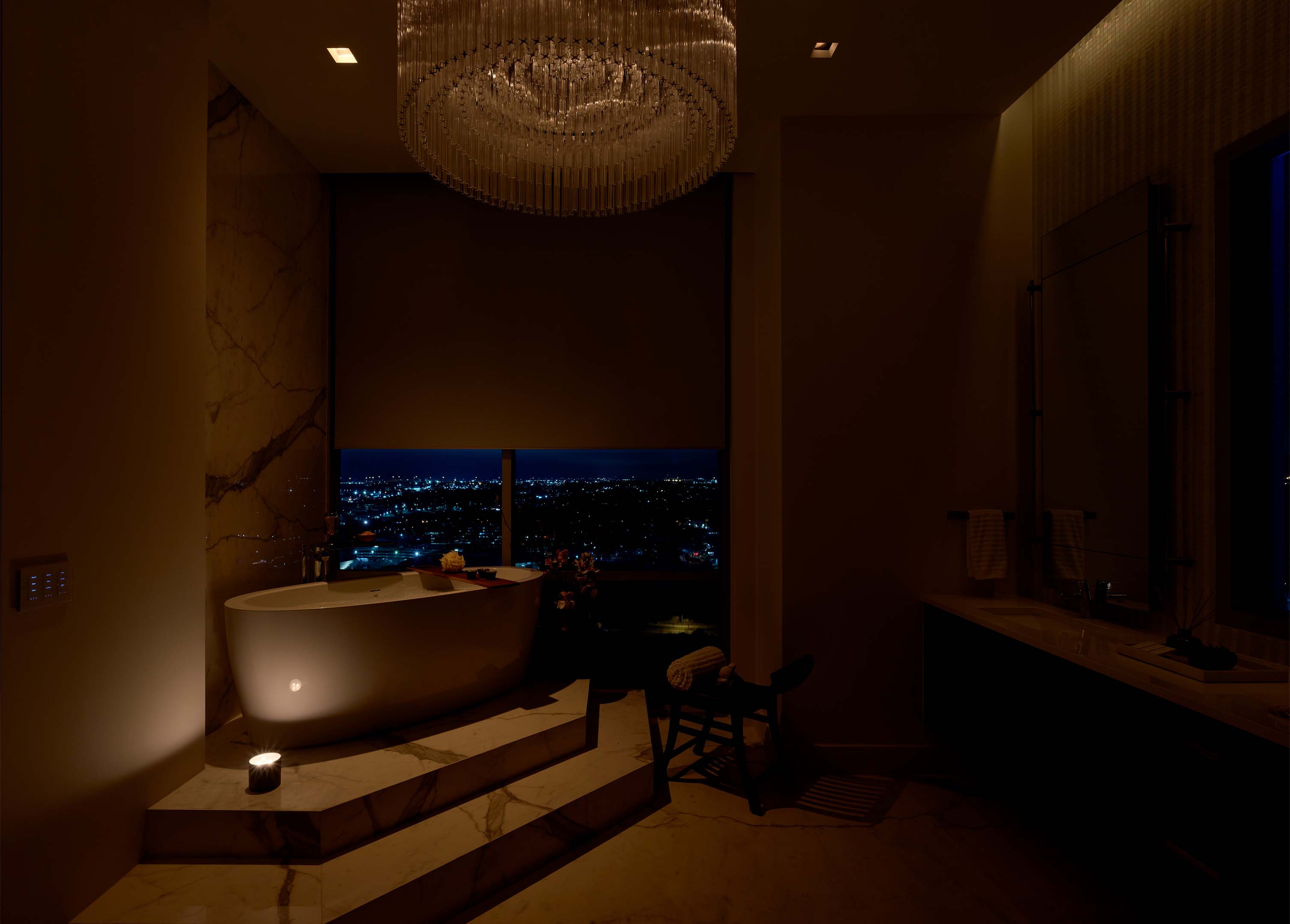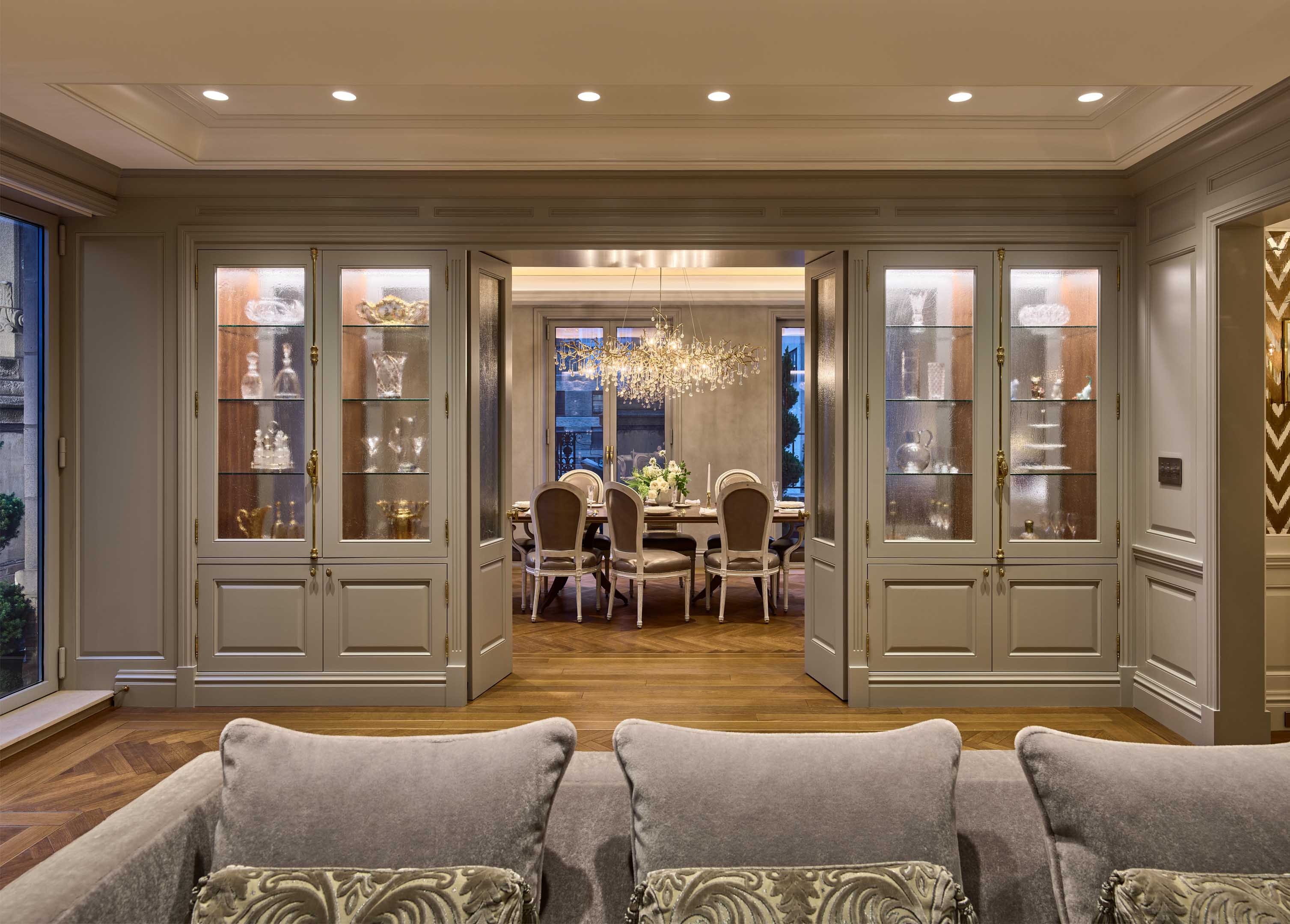Layered Lighting Tips for Luxury Spaces
April 15, 2023
Like any aspect of design, lighting is meant to be multi-dimensional. It can provide general illumination, highlight a prized possession, or brighten a work surface.
Author
Lutron
Date
04.15.23
Read
10 minutes
10 Min
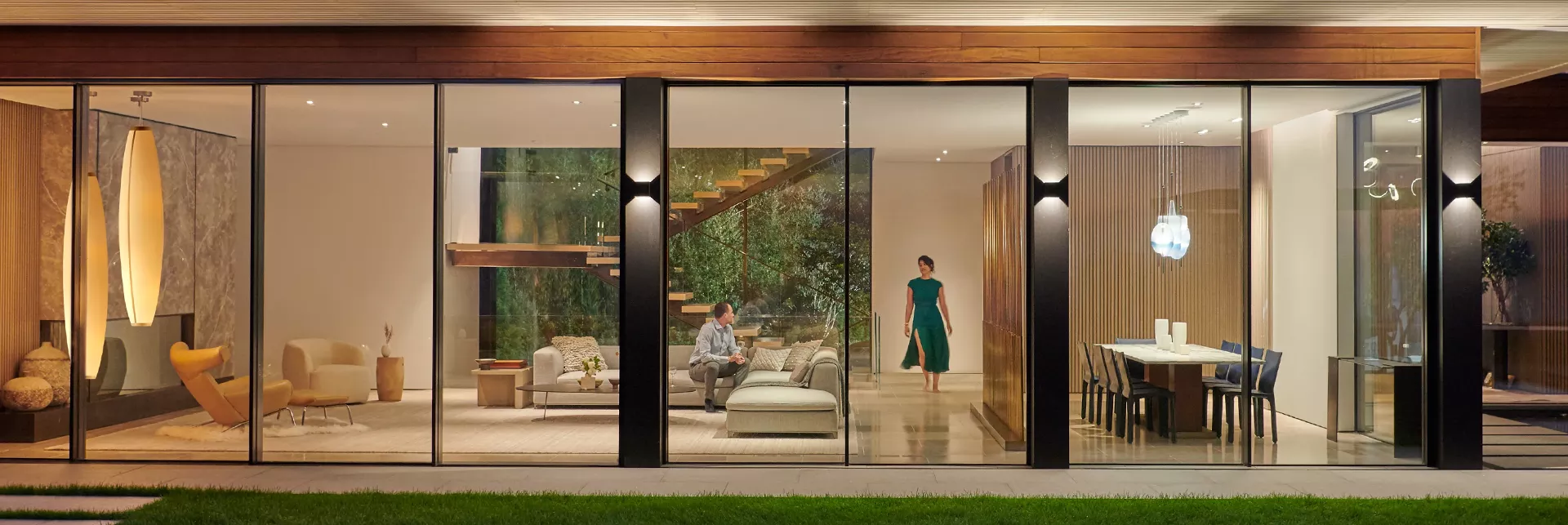
“If you were to paint a room with only one typology of light at a singular intensity, it would feel really flat,“ says Cecilia Ramos, Senior Director at Lutron. “You wouldn't feel depth.” By adding layers of light, one can achieve a balanced space that’s both visually interesting and functional. This attention to detail elevates the space to luxury status.
With dynamic layered lighting, residents are able to set the mood by shifting the color temperature, and intensity of each fixture. “Say the homeowner is hosting an intimate cocktail hour,” Ramos says. “They probably want the lights right above the kitchen island to be brighter, other areas to be warm and dim, and their artwork to shine. By layering their lighting with Ketra, they can accomplish this.”
Determine Your Lighting Needs
Every client and every room requires different lighting. Things like natural light, the activities being performed, the decor and furnishings present, and personal preference should steer the lighting decisions.
To grasp these components, Robert Hoshyla, partner at luxury lighting design firm Orsman Design, suggests that design professionals complete a comprehensive site visit. “It’s important to get a clear understanding of the space,” he says. “What the layout is going to be, where the natural light comes in, any large auxiliary structures or organic landscape that could affect the lighting—all of these help us form a plan. Then we need to know what matters to the client. What art needs to stand out, what architectural detail is important, what chandelier needs to pop against the surrounding light?”
These factors should always dictate the final lighting plan. That said, there are lighting standards that can be referenced to understand the amount of light needed in each space. To determine this amount, professionals use a formula called the Lumen Method, which takes factors like square footage and footcandle into account.
“Lighting is about using the home as a canvas, calling attention to the life that happens inside and accentuating the home’s most exciting features.”
Robert Hoshyla
Partner, Orsman Design
Three Basic Types of Layered Lighting
To create a balanced atmosphere, each room should have ambient, accent, and task lighting. “Even though we’re adding these layers of light, it's not really the lighting that we want people to notice,” Hoshyla says. “Lighting is about using the home as a canvas, calling attention to the life that happens inside and accentuating the home’s most exciting features.”
Ambient Lighting
Consider ambient lighting the base layer, providing general illumination from a variety of sources.
Daylight from windows is a common type of ambient natural light. To control the intensity of daylight, install window treatments—like drapery, shades, or blinds—that can either diffuse or reduce light based on the material.
Recessed downlights (with a wide beam angle) are a common type of ambient light. “To get ambient light, people often install our downlights in the ceiling that are not aimed at anything in particular, just pointing down to create a soft blanket of light,” Ramos says.
To elevate a room’s design and ambient lighting, design professionals might opt for cove lighting. Here, the light source is hidden architectural details (like ledges or ceiling valences) and aimed downwards to illuminate a wall or pointed upwards to bounce light off a ceiling, producing an indirect, diffused glow. Because they’re tucked away, cove lights require a bulb with a narrow profile, like Ketra’s G2 Linear.
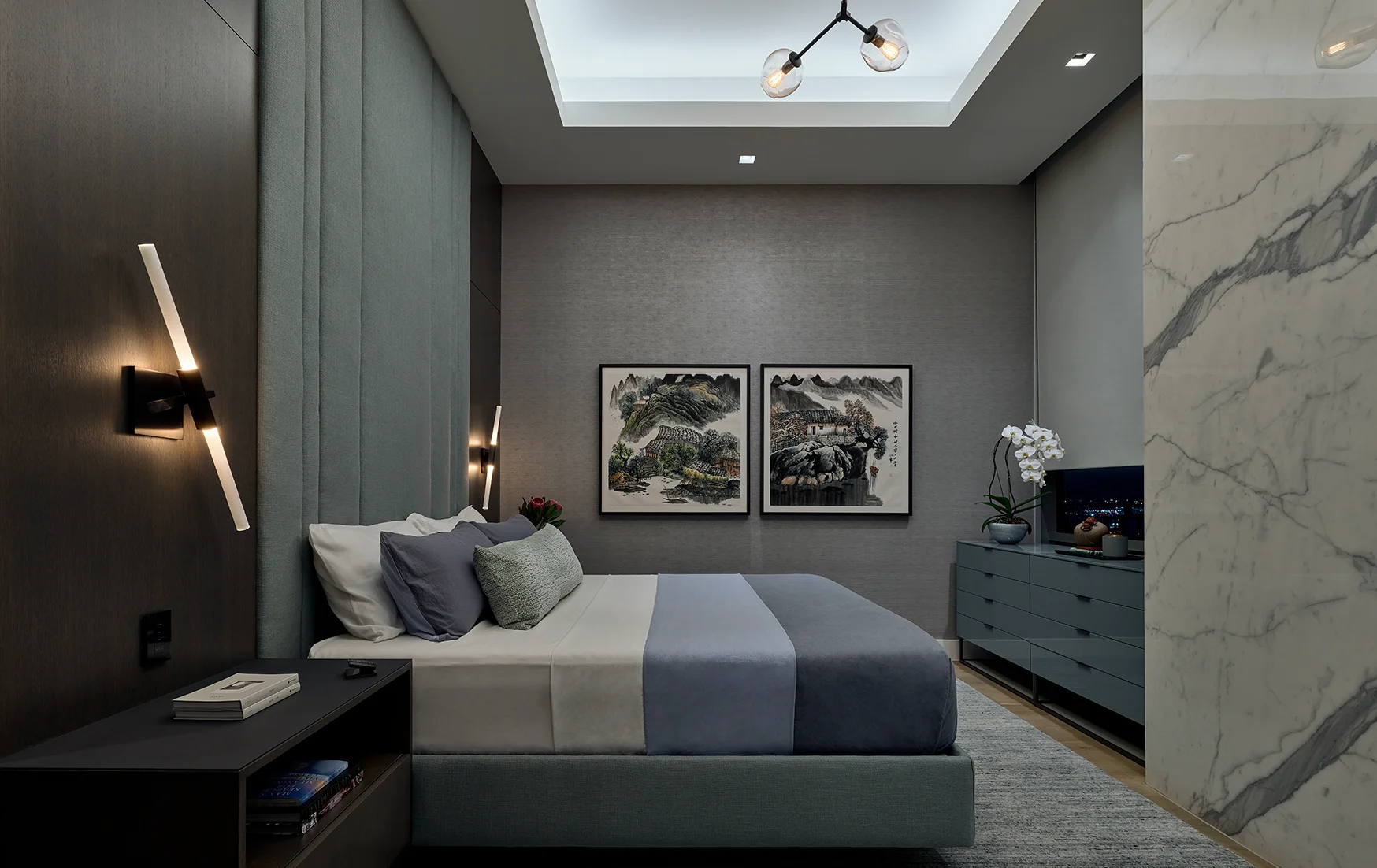
Photo Credit: Frank Oudenman
Task Lighting
The most practical type of lighting, task lighting is meant to illuminate surfaces or areas for a particular activity. Because it directs light onto workspaces, it typically requires more lumens than ambient light. Task lighting can also bring a sense of intimacy to the space, especially when the room’s other lights are dimmed.
“In the kitchen, task lighting can be used to cast a cool, bright light for cooking,” Hoshyla says. “For dining, you want something warmer and less intense. An activity like reading calls for different light quality depending on the time of day or medium (paper or digital)—an easy adjustment with Ketra's natural light technology and easy-to-use controls.”
To find the right fixture for task lighting, Ramos suggests considering the user’s positioning within that space. For reading, a table or floor lamp would sit closer to the reader, eliminating shadows or glares that might be cast by lighting from above. A pendant light, on the other hand, would be appropriate for activities like dining or crafting since it provides direct overhead light without sacrificing surface area. Under-cabinet lighting is ideal for kitchen-based tasks, though it can also be useful in spaces like laundry rooms, bathrooms, or dressing rooms.
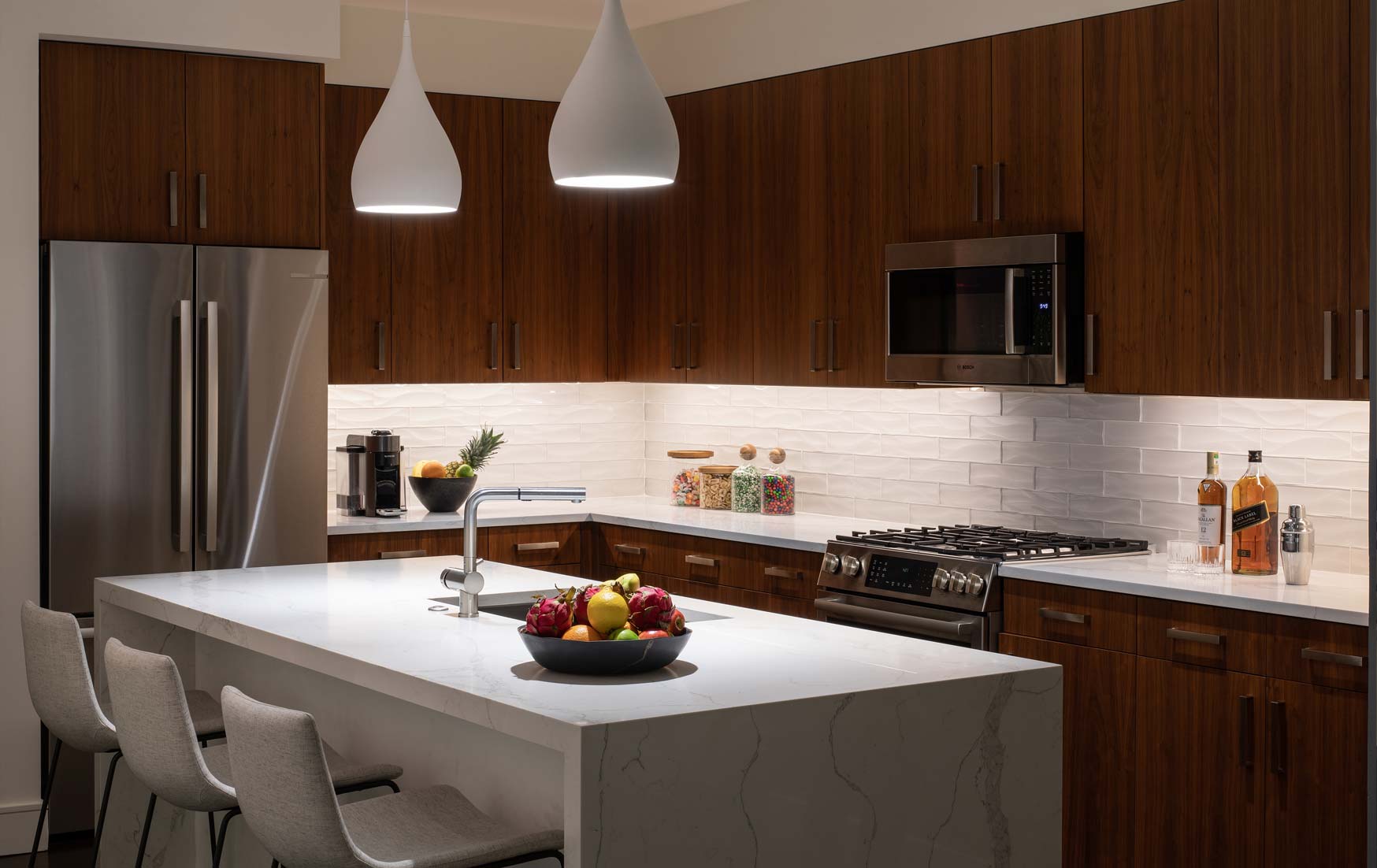
Photo Credit: Jake Holt Photography
Accent Lighting
If ambient light is the base layer and task light is the functional layer, then accent lighting provides the finishing touches. It’s a form of lighting used to highlight areas of interest. “Accent lighting guides people’s eyes and bodies through the space,” Ramos says. “Especially in luxury properties, it gives the eye landing points, showcasing objects with value or meaning, like art, furnishings, or architectural details.” To create those highlights, accent lights should use a narrow beam angle and should be significantly brighter than surrounding light.
Accent lighting comes in various forms, including recessed downlights, track-mounted projectors, integrated millwork lighting, or toe-kicks. When aimed at a particular object, like a sculpture or painting, recessed lights can function as accent lights instead of ambient lights. Track-mounted projectors are an ideal option for those who want the flexibility to change their art displays without having to drastically alter the room’s lighting. To highlight quality craftsmanship, consider integrated millwork lighting. Finally, toe-kick lighting adds a subtle glow and a floating effect to near-the-ground furnishings, like vanities, fireplaces, and lower cabinets. They can also be used to illuminate corridors and stairs at night.
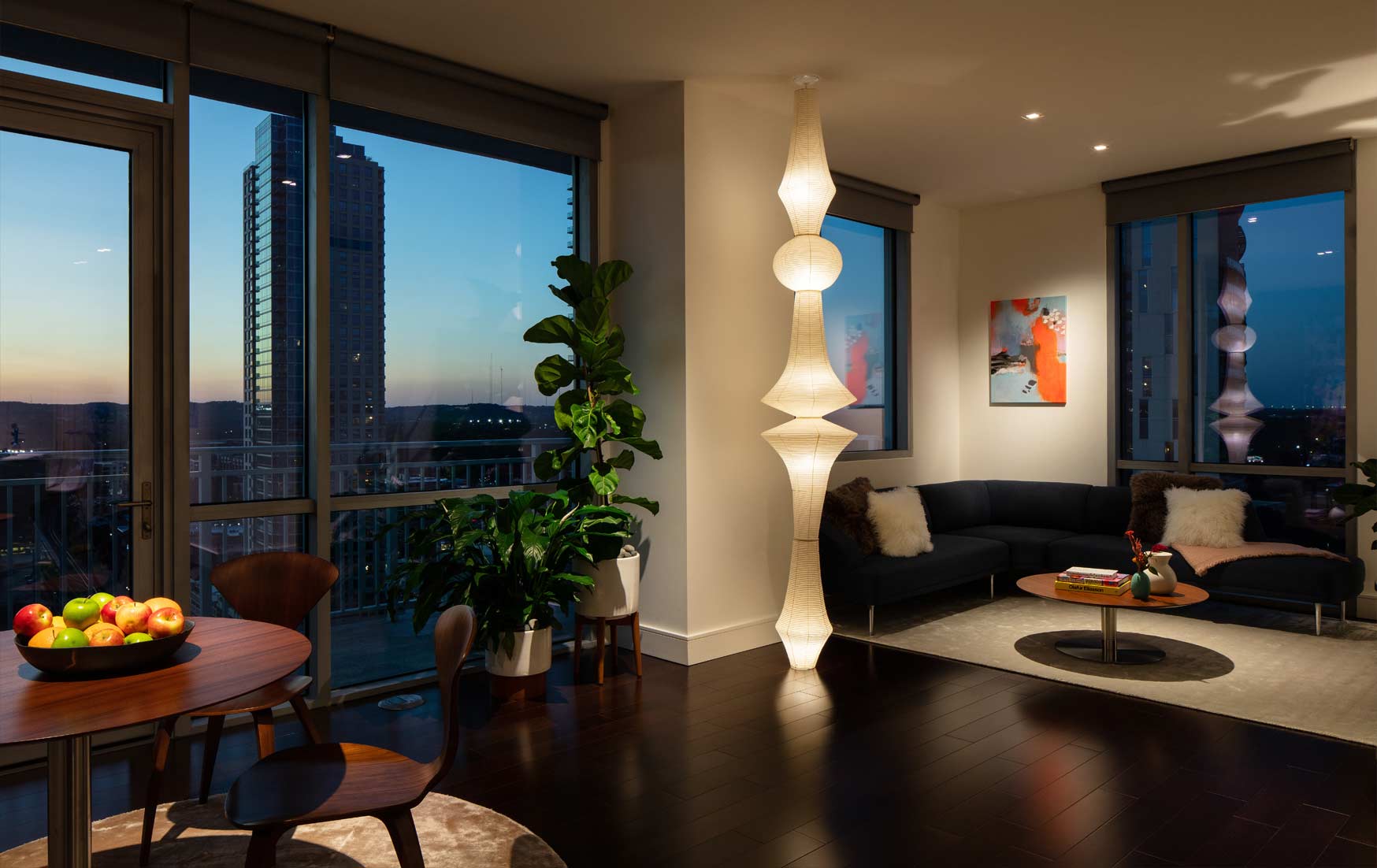
Photo Credit: Jake Holt Photography
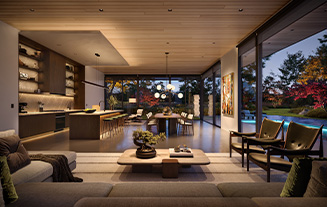
Elevate Your Layered Lighting with Lutron
Once all three layers of lighting—ambient, task, and accent—have been established, the next step is having a centralized control system that allows the user to calibrate the lighting to create different moods and hierarchies in the space. “Lutron’s control system can be super simple, like enabling the lights to sync to natural daylight so that the mood is always just right,” Ramos says. “But you can also program light in a very nuanced way with more complex presets for entertaining or relaxing.” Find the perfect lighting for any mood, occasion, task, or project by booking a demo with Lutron.
Get design support.
Consult with a Lutron residential specification specialist today and learn how Lutron can help you craft elevated experiences with light on your next project.
